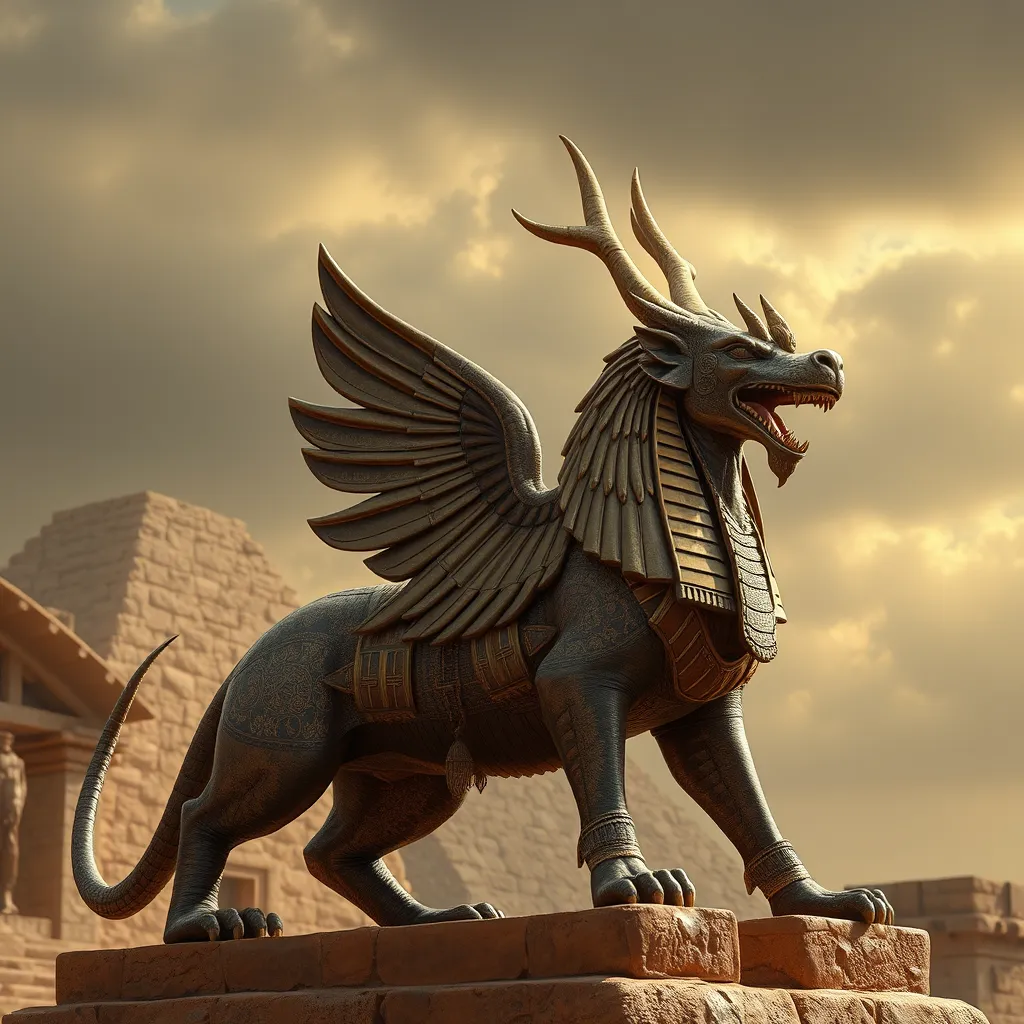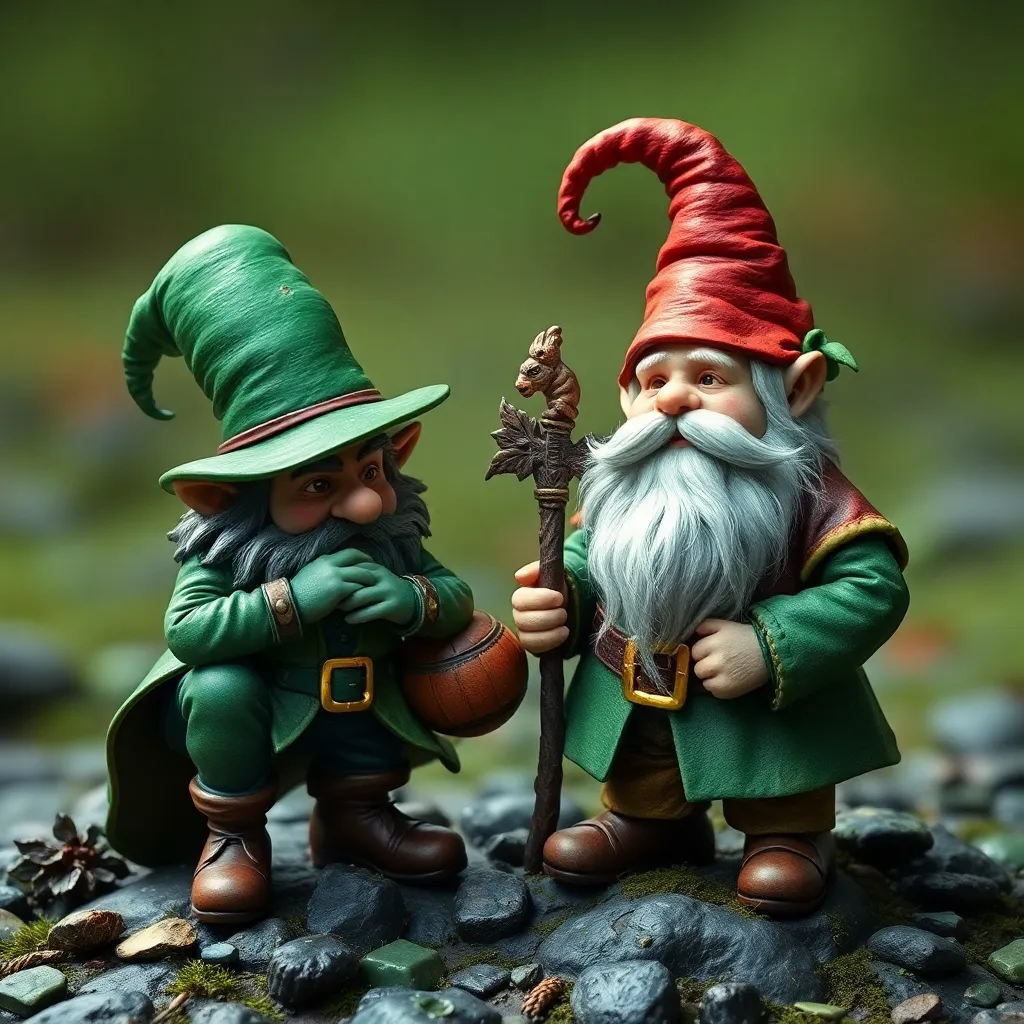The Oni’s Art: Unveiling the Visual Representations of Oni Legends in Different Cultures
I. Introduction
The term ‘Oni’ refers to a type of demon or ogre found in Japanese folklore, often depicted as fearsome creatures with horns, wild hair, and an array of colors that signify their nature. They are deeply embedded in the cultural psyche of Japan, symbolizing both evil and the darker sides of human nature. Oni legends serve as cautionary tales, moral lessons, and reflections of societal fears.
This article aims to explore the visual representations of Oni across various cultures, examining their artistic interpretations and cultural significance. By delving into historical contexts and modern adaptations, we can uncover how these mythical beings continue to influence art globally.
II. Historical Context of Oni Legends
A. Origins of Oni in Japanese Folklore
Oni are believed to have originated from ancient Japanese beliefs and were likely influenced by Buddhist teachings that introduced concepts of hell and demons. Over time, they became associated with misfortune, disease, and natural disasters, often serving as scapegoats for societal fears.
B. Evolution of Oni Mythology through the Ages
Throughout Japanese history, Oni have evolved from terrifying figures to more complex characters. In the Edo period, they became subjects of art and literature, often depicted with humorous traits, showing a shift in their representation from pure evil to multifaceted beings.
C. Comparative Overview of Similar Entities in Other Cultures
Many cultures have their own versions of ogres or demons that share similarities with Oni. For instance:
- In Chinese mythology, the ‘Yaoguai’ are spirits or monsters that can be malevolent.
- In Western folklore, ogres are often portrayed as brutish and greedy creatures.
- In Southeast Asian cultures, figures like the ‘Raksasa’ in Hindu mythology serve similar roles as demons or malevolent beings.
III. Visual Representations of Oni in Japanese Art
A. Traditional Mediums: Ukiyo-e and Other Styles
Japanese art has a rich tradition of depicting Oni, particularly through Ukiyo-e, a genre of woodblock print that flourished in the 17th to 19th centuries. Artists like Utagawa Kuniyoshi and Utagawa Hiroshige created iconic representations of Oni, often showcasing them in dynamic scenes.
B. Symbolism in Color and Form: Red, Blue, and Horned Depictions
Oni are typically depicted in vibrant colors, with red and blue being the most common. Red Oni often symbolize passion and strength, while blue Oni represent jealousy and treachery. The horns of Oni are a prominent feature, representing their otherworldly nature and ferocity.
C. Notable Artists and Their Contributions to Oni Imagery
Several artists have made significant contributions to the visual representation of Oni:
- Utagawa Kuniyoshi: Known for dynamic and expressive prints featuring Oni in battle.
- Hokusai: His works often included Oni in scenes of folklore and mythology.
- Yoshitoshi: Focused on the psychological aspects of Oni, portraying them in more humanized forms.
IV. Oni in Southeast Asian Cultures
A. Comparison with Similar Figures in Thai and Indonesian Folklore
In Southeast Asia, entities similar to Oni appear in various mythologies. For example, in Thailand, the ‘Phi Ta Khon’ are ghostly figures associated with festivals. In Indonesia, ‘Jinn’ and ‘Raksasa’ share traits with Oni, embodying both fear and moral lessons.
B. Unique Artistic Styles and Interpretations
Southeast Asian art offers unique interpretations of similar entities. Traditional Thai murals often depict demonic figures engaging in battles, while Indonesian shadow puppetry brings to life Raksasa in intricate performances, showcasing their roles in cultural narratives.
C. Cultural Significance and Modern Adaptations
Both Thai and Indonesian cultures continue to adapt these traditional representations of demons, incorporating them into modern art forms, festivals, and performances, thereby preserving their cultural heritage.
V. Oni Influences in Western Art
A. Introduction of Oni into Western Pop Culture and Art
Oni have made their way into Western pop culture, influencing art, literature, and film. The fascination with Eastern mythology has led to a blending of Oni characteristics with Western storytelling.
B. Case Studies: Comic Books, Movies, and Graphic Novels
Numerous comic books and graphic novels feature Oni-inspired characters, such as:
- Hellboy: Featuring demonic figures that draw heavily from Eastern mythology.
- Pacific Rim: Where Kaiju represent a modern interpretation of monstrous beings akin to Oni.
C. Reception and Reinterpretation of Oni Imagery in the West
Oni have often been reinterpreted in the West, sometimes losing their cultural context. While some portrayals remain faithful to their origins, others depict them in exaggerated or simplified forms, contributing to a hybrid understanding of these creatures.
VI. Contemporary Representations and Adaptations
A. Modern Artists Reimagining Oni Themes
Contemporary artists continue to explore Oni themes, often reimagining them within modern contexts. Artists like Takashi Murakami blend traditional motifs with contemporary aesthetics, creating a dialogue between past and present.
B. Use of Digital Media and Street Art
The rise of digital media has allowed for innovative representations of Oni. Street artists often incorporate Oni imagery in their work, using it as a means to comment on urban life and culture.
C. Cultural Fusion and Global Adaptations in Contemporary Art
Globalization has led to a fusion of cultural elements, with Oni appearing in various artistic forms worldwide. This cultural exchange enriches the narrative surrounding Oni, allowing for diverse interpretations and expressions.
VII. The Role of Oni in Art as Cultural Commentary
A. Exploring Themes of Fear, Morality, and the Supernatural
Oni representations often explore deep themes of fear, morality, and the supernatural. They serve as reflections of societal anxieties and moral dilemmas, prompting viewers to confront their own fears.
B. How Oni Representations Reflect Societal Values and Beliefs
Art featuring Oni embodies the values and beliefs of the cultures from which they originate. Their portrayal can indicate societal attitudes towards evil, punishment, and redemption, serving as a mirror to cultural norms.
C. The Impact of Oni Art on Cultural Identity and Preservation
The enduring presence of Oni in art contributes to cultural identity and preservation. By keeping these legends alive through various artistic expressions, societies honor their heritage and pass on important narratives to future generations.
VIII. Conclusion
In conclusion, Oni are significant figures in various cultures, particularly in Japan, where they symbolize the complexities of human nature. Through exploring their visual representations across different societies, we can appreciate the rich tapestry of myths and beliefs that shape our understanding of these creatures.
The enduring legacy of Oni in art highlights their relevance today, as contemporary artists continue to engage with these ancient themes. We encourage further exploration and appreciation of Oni art, recognizing its power to connect us with cultural histories and human experiences.



